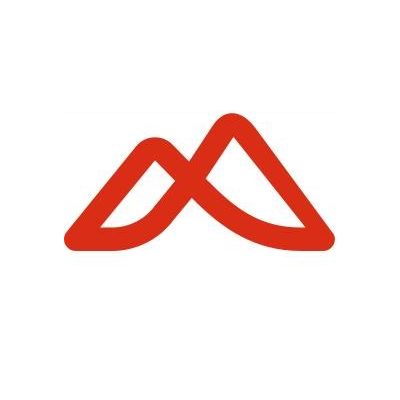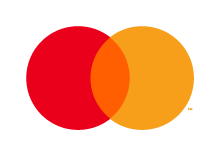Technical analysis is about deciphering signals within chart patterns to find hidden opportunities. Studying recurring shapes and trends can give you an edge in predicting future price movements. So, let’s dive into the world of chart pattern analysis together!
What are Chart Patterns and Why Should You Care?
Chart patterns are like the footprints left behind by the constant dance between buyers and sellers. They can appear in various shapes, such as triangles, flags, head and shoulders, double tops, and more.
No pattern can guarantee what prices will do next, but analyzing chart patterns can offer you valuable insights into where the market might be heading.
Here’s why you should pay attention to chart pattern analysis:
- Chart patterns can help you spot support and resistance levels, signaling potential reversals or breakouts. It’s like having signposts pointing out key price levels to watch.
- Patterns offer a visual representation of supply and demand dynamics in the market. For instance, consolidation patterns like pennants suggest a balanced market just waiting for a potential breakout.
- Recurring patterns show us that human psychology and behavior drive prices. Traders often react the same way when prices reach extremes. That’s what creates these repeat patterns.
- Chart patterns can confirm or challenge other technical indicators. It’s like having a second opinion about whether a potential signal is reliable or not.
In a nutshell, chart patterns provide you with a visual guide of changing market psychology and potential turning points. When you combine pattern analysis with other techniques, you’re arming yourself with a powerful analytical tool.
Major Types of Chart Patterns
There are a ton of chart patterns out there, but some pop up more frequently and provide higher probability trading opportunities. Let’s check out some of the most common and handy ones to know:
Head and Shoulders
This reversal pattern forms a baseline with three peaks, where the highest peak (head) is flanked by two smaller peaks (shoulders). The pattern indicates potential exhaustion of a trend, often reversing an uptrend into a downtrend when the neckline is broken.
Traders can set entry orders below the neckline and place stops above the right shoulder. Measuring the height of the head provides price targets.
Cup and Handle
A bullish continuation pattern, the cup and handle have a “U” shaped rounding bottom, the cup, followed by a slight pullback that forms the handle. This suggests consolidated energy before continuing an uptrend.
Traders might go long once price breaks the downtrend resistance line. Stops can be placed below handle lows to limit risk.
Flags and Pennants
These compact patterns demonstrate brief pauses in strong trends. Flags shape into rectangles while pennants taper into small triangles. The previous trend usually resumes upon a breakout from the pattern.
Entry orders can be placed above flag highs or below pennant lows, with stops on the other sides of the patterns. Price targets are projected using the pattern’s height.
Wedges
Wedges form when trendlines converge, showing diminishing momentum and range. Rising wedges have lower highs and higher lows. Falling wedges have higher highs and lower lows. Breakouts frequently occur in the direction of the previous trend.
Traders might initiate long trades on falling wedge uptrend breakouts and short trades on rising wedge breakdowns below trendline support. Stop losses can be placed above or below pattern high/low.
Triangles
Triangles demonstrate compressing ranges and uncertainty between buyers and sellers. Ascending triangles have flat resistance and rising support. Descending triangles have flat support and falling resistance. Breakouts tend to be volatile in the direction of the wider end.
Entering long trades on ascending triangle resistance breaks or short trades on descending triangle support breaks can capture explosive moves. Stops are best placed on opposite ends of the pattern.
Strategies for Trading Chart Patterns
To trade chart patterns profitably, you’ll need some smart strategies. Here are some tips:
- Stick with the trend. Trade continuation patterns that match the larger trend to improve your success rates. Counter-trend patterns are a bit more of a gamble.
- Hold your horses for confirmation. Wait for pattern breakouts with increased volume to avoid false starts. No one wants to be the person who jumped the gun.
- Use stop-losses. This is your safety net to protect your hard-earned cash from unpredictable market moves. The best spot to place your stop is just outside the pattern boundary.
- Take some profits off the table at your targets. This way, you’re locking in gains while letting the rest ride.
- Look for confluence. When you match up patterns with indicators like moving averages or Fibonacci levels, it’s like having extra reassurance. And if things diverge, that could be your cue to reassess.
- Adapt to the market conditions. Some patterns work better in range-bound markets than trending ones. Make sure your expectations fit the reality of the market.
- Keep your emotions in check. Don’t be too hasty and chase trades. And remember, a normal pullback is not a reason to panic and exit. Stick to your trading rules.
With the right strategies, chart patterns can be a huge boost to your trading success. However, flying blind with just patterns and no plan is like going into a boxing match with one hand tied behind your back.
Common Pitfalls to Avoid
Chart patterns are super helpful trading tools, but they can also lead you down the wrong path if you’re not careful.
- Chasing patterns too late. Entering at the end of the pattern leaves little room for profits. Identify patterns early in their formation.
- Forcing patterns to fit. Bias can lead to seeing patterns where none exist. Avoid imaginary patterns.
- Ignoring context. A pattern may fail if the larger environment doesn’t support it. Assess overall conditions.
- Poor risk management. No stops or improper stops turn normal pullbacks into losses. Manage risk on every trade.
- Letting emotions override rules. Allowing excitement or fear to dictate trades leads to reckless decisions. Follow a trading plan.
- Overtrading patterns. Relentlessly trading every pattern opportunity can overexpose capital. Be selective with high-probability setups.
By being aware of these potential pitfalls, you can use chart pattern analysis to its full potential and make it a powerful tool in your trading toolkit.
Wrapping Up
In conclusion, mastering chart pattern analysis is a must for any trader. Recognizing those recurring patterns that reflect market psychology can open up profitable trading opportunities for you.
However, combining chart patterns with other analysis methods and employing effective risk management are what separate successful traders from the rest. And remember, as the saying goes, “The trend is your friend, until the pattern ends!”.












